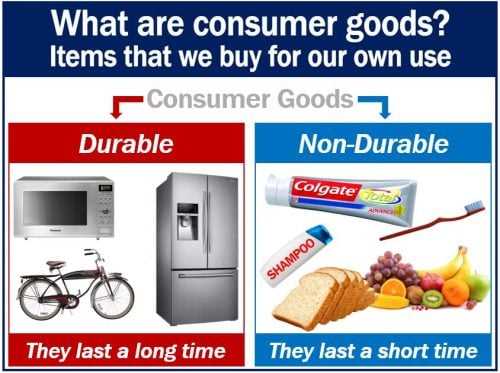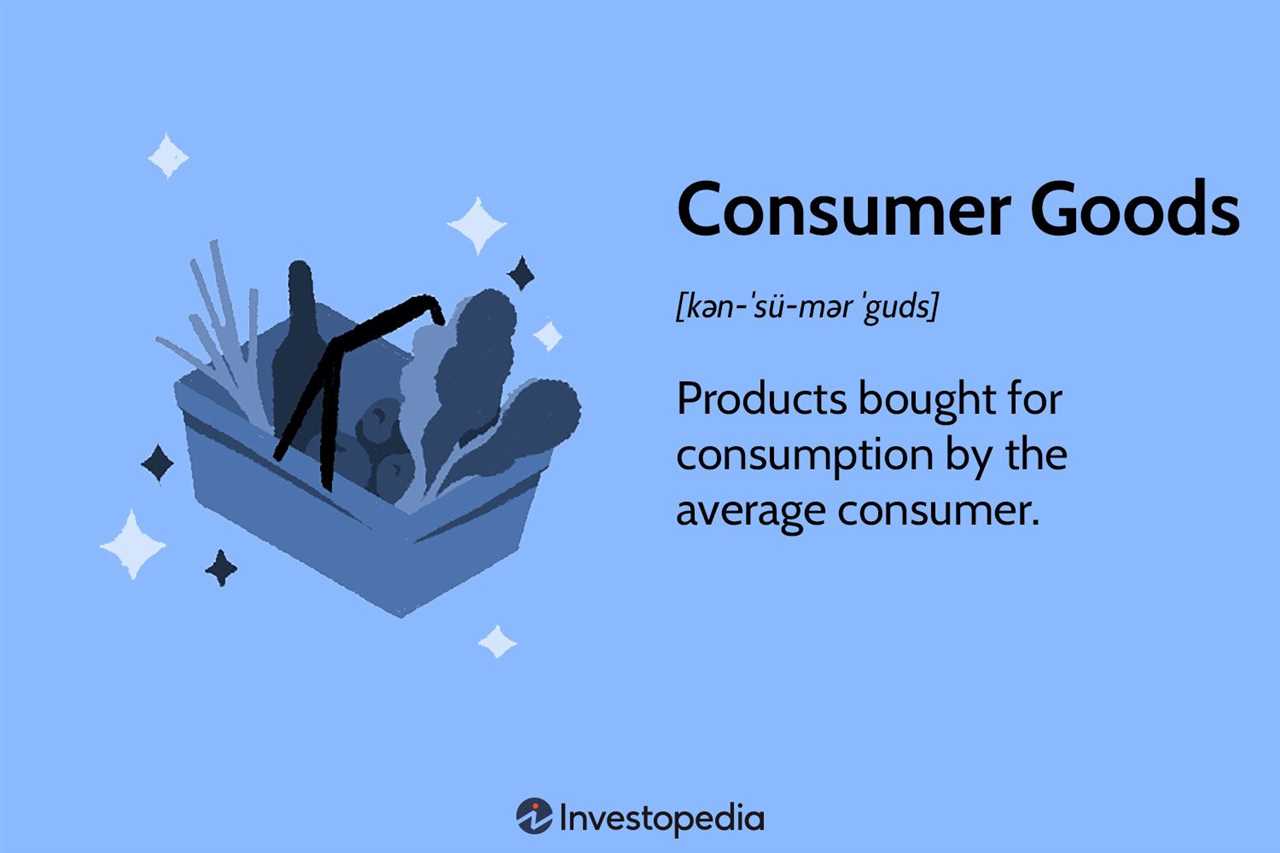Consumer Goods: Definition, Types, and Examples

Consumer goods are products that are purchased by individuals for personal use or consumption. They are the end result of the production process and are intended to satisfy the needs and wants of consumers. Consumer goods can be categorized into different types based on their characteristics and usage.
Types of Consumer Goods
1. Convenience Goods: Convenience goods are products that are inexpensive, frequently purchased, and require minimal effort to buy. These goods are usually found in supermarkets or convenience stores and include items like snacks, toiletries, and household cleaning products.
2. Shopping Goods: Shopping goods are products that are purchased less frequently and require more time and effort to compare and choose. These goods are usually more expensive and include items like clothing, electronics, and furniture.
3. Specialty Goods: Specialty goods are products that are unique or have special characteristics that make them desirable to a specific group of consumers. These goods are often high-end and include items like luxury cars, designer clothing, and gourmet food.
4. Unsought Goods: Unsought goods are products that consumers do not actively seek out or think about purchasing. These goods are usually purchased out of necessity or in response to a specific need or problem. Examples of unsought goods include funeral services, insurance policies, and emergency medical supplies.
Examples of Consumer Goods

Here are some examples of consumer goods:
– Convenience goods: chips, toothpaste, laundry detergent
– Shopping goods: smartphones, clothing, furniture
– Specialty goods: luxury cars, designer handbags, gourmet chocolates
– Unsought goods: life insurance, fire extinguishers, pest control services
Definition of Consumer Goods
Consumer goods are products that are purchased by individuals for their personal use or consumption. These goods are typically used on a daily basis and are essential for meeting the needs and wants of consumers. They can be tangible items, such as clothing, food, and electronics, or intangible services, such as healthcare and transportation.
Consumer goods can be further classified into two main categories: durable goods and non-durable goods. Durable goods are products that have a longer lifespan and are expected to last for an extended period of time. Examples of durable goods include cars, furniture, and appliances. On the other hand, non-durable goods are products that are consumed or used up quickly and have a shorter lifespan. Examples of non-durable goods include food, beverages, and toiletries.
Characteristics of Consumer Goods

Consumer goods possess several key characteristics that make them distinct from other types of goods:
- Tangible: Consumer goods are physical products that can be seen, touched, and felt by consumers.
- Utility: Consumer goods are designed to satisfy the needs and wants of consumers, providing them with utility and value.
- Personal Use: Consumer goods are intended for personal use or consumption, rather than for resale or production.
- Wide Variety: Consumer goods encompass a wide range of products, catering to the diverse preferences and tastes of consumers.
The Importance of Consumer Goods
Consumer goods play a crucial role in the economy, driving consumption and stimulating economic growth. They contribute to the overall well-being and satisfaction of individuals, enhancing their quality of life. Consumer spending on goods also generates revenue for businesses, creating jobs and supporting economic development.
| Type of Consumer Goods | Definition | Examples |
|---|---|---|
| Durable Goods | Consumer goods that have a longer lifespan and are expected to last for an extended period of time. | Cars, furniture, appliances |
| Non-Durable Goods | Consumer goods that are consumed or used up quickly and have a shorter lifespan. | Food, beverages, toiletries |
Types of Consumer Goods
1. Convenience Goods: These are everyday items that consumers purchase frequently and with minimal effort. Examples include toiletries, snacks, and household cleaning products. Convenience goods are typically low-cost and readily available.
2. Shopping Goods: These are goods that consumers buy less frequently and usually require more research and comparison before making a purchase. Examples include clothing, electronics, and furniture. Shopping goods are often higher in price and may involve visiting multiple stores or conducting online research.
3. Specialty Goods: These are unique or high-end products that cater to specific consumer preferences or interests. Examples include luxury cars, designer clothing, and gourmet food items. Specialty goods are often associated with exclusivity and may have limited availability.
4. Unsought Goods: These are goods that consumers may not actively seek out or think about purchasing. Examples include funeral services, insurance policies, and certain medical products. Unsought goods often require marketing efforts to create awareness and generate demand.
Examples of Consumer Goods
Consumer goods are products that are purchased by individuals for their personal use or consumption. These goods can be categorized into different types based on their characteristics and uses. Here are some examples of consumer goods:
| Type of Consumer Good | Examples |
|---|---|
| Durable Goods | Cars, furniture, appliances |
| Non-durable Goods | Food, beverages, toiletries |
| Services | Haircuts, car repairs, house cleaning |
| Convenience Goods | Snacks, drinks, newspapers |
| Shopping Goods | Clothing, electronics, furniture |
| Specialty Goods | Luxury watches, designer clothing, high-end electronics |

Emily Bibb simplifies finance through bestselling books and articles, bridging complex concepts for everyday understanding. Engaging audiences via social media, she shares insights for financial success. Active in seminars and philanthropy, Bibb aims to create a more financially informed society, driven by her passion for empowering others.
